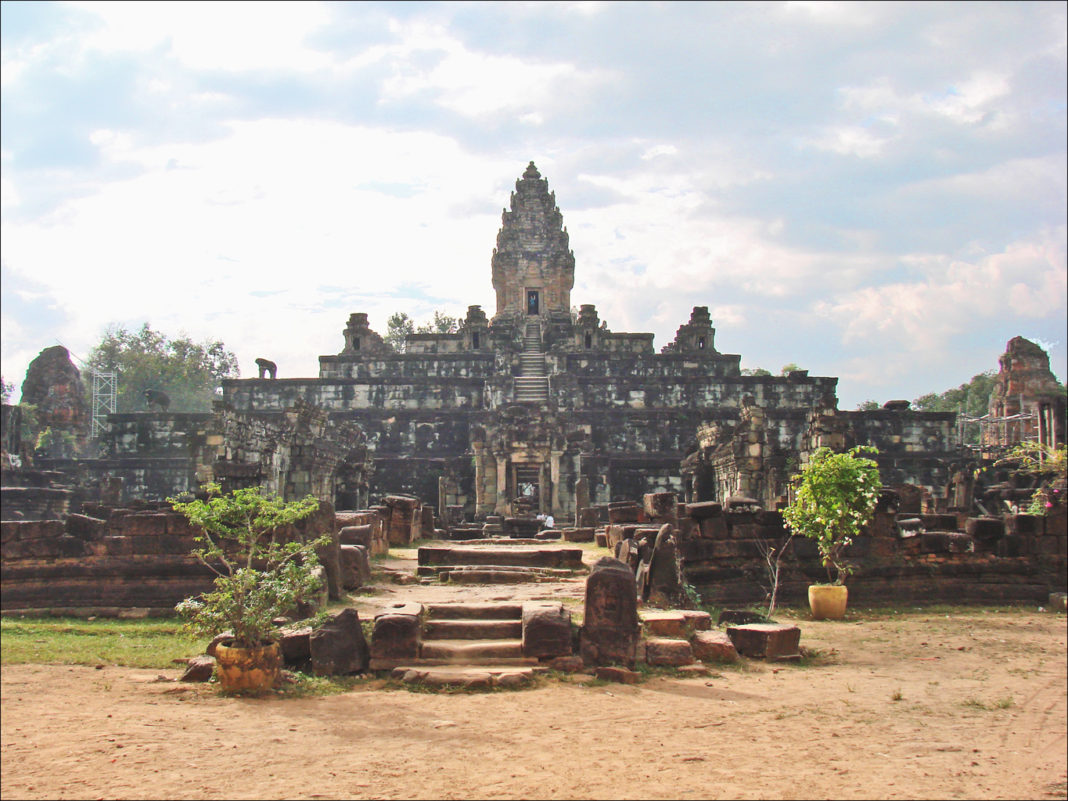In 802 AD, the first king of Angkor Jayavarman II declared the sovereignty of Cambodia. After ups and downs, he established his capital at Hariharalaya. A few decades later, his successors constructed Bakong in stages as the first temple mountain of sandstone at Angkor.
Bakong enjoyed its status as the state temple of Angkor for only a few years, but later additions from the 12th or 13th centuries testify that it was not abandoned. Toward the end of the 9th century, Indravarman’s son and successor Yasovarman I moved the capital from Hariharalaya to the area north of Siem Reap now known as Angkor, where he founded the new city of Yaśodharapura around a new temple mountain called Bakheng.
The site of Bakong measures 900 metres by 700 metres, and consists of three concentric enclosures separated by two moats, the main axis going from east to west. The outer enclosure has neither a wall nor gopuram and its boundary is the outer moat, today only partially visible. Between the two moats there are the remains of 22 satellite temples of brick. The innermost enclosure, bounded by a laterite wall, measures 160 metres by 120 metres and contains the central temple pyramid and eight brick temple towers, two on each side. A number of other smaller buildings are also located within the enclosure. Just outside the eastern gopura there is a modern Buddhist temple.
The pyramid itself has five levels and its base is 65 by 67 metres. It was reconstructed by Maurice Glaize at the end of the 1930s according to methods of anastylosis. On the top, there is a single tower that is much later in provenance, and the architectural style of which is not that of the 9th-century foundations of Hariharalaya, but that of the 12th-century temple city Angkor Wat.
Though the pyramid at one time must have been covered with bas relief carvings in stucco, today only fragments remain. A dramatic scene fragment involving what appear to be asuras in battle gives a sense of the likely high quality of the carvings. Large stone statues of elephants are positioned as guardians at the corners of the three lower levels of the pyramid. Statues of lions guard the stairways.
According to en.wikipedia.org












